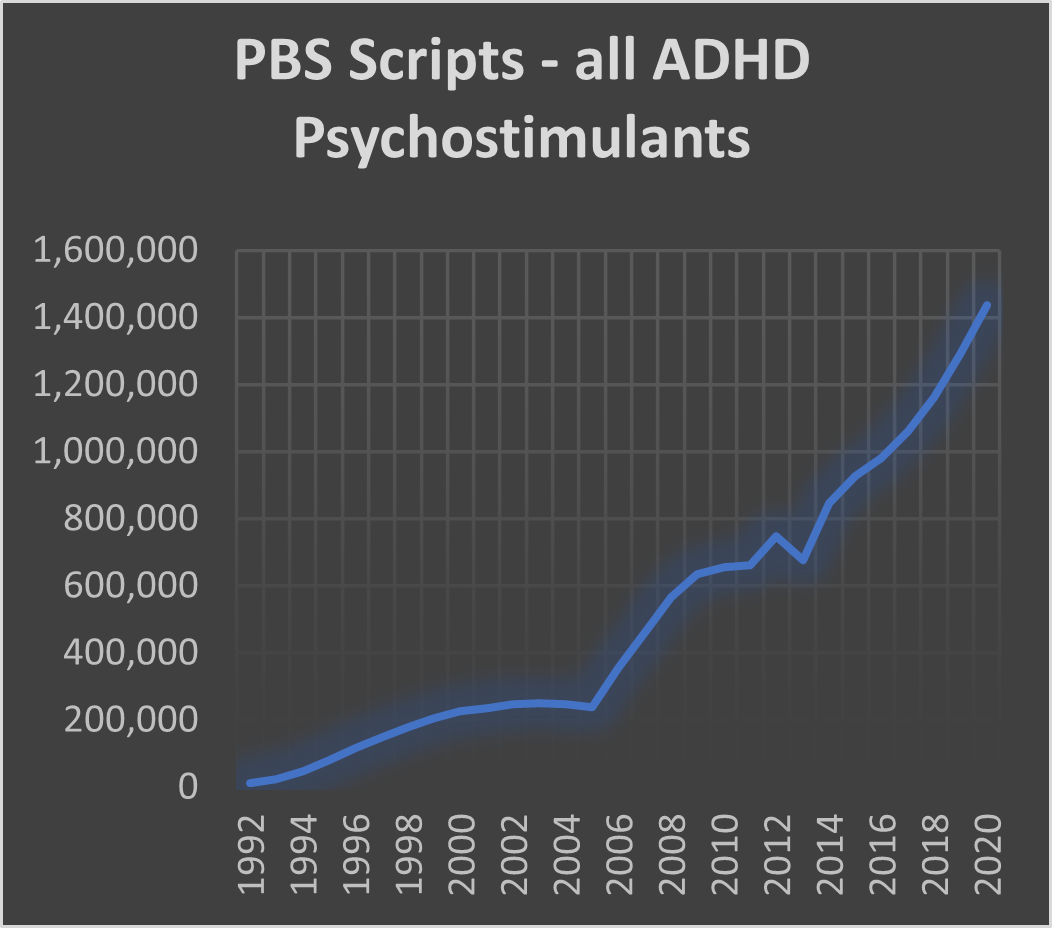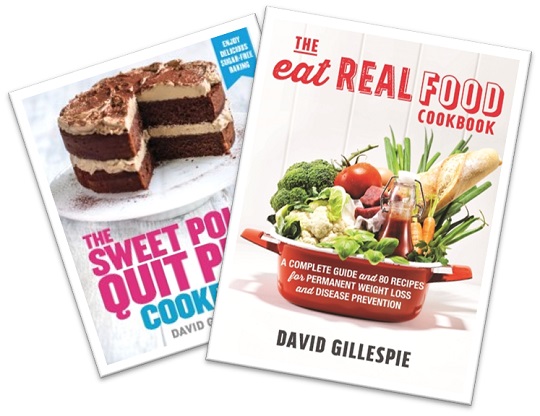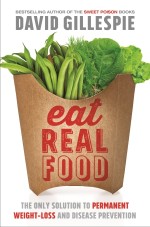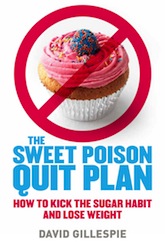Introduction
If I were to call you an addict, I doubt you’d take it as a compliment. Addicts are nasty people. They steal, they cheat and lay unconscious in the gutter, oblivious to the world around them. Am I right? Yet, in the sense I will use that word in this book, you probably are an addict.
You probably wouldn’t be too keen on me describing you as having a mental illness either. But according to the latest statistics, if you are standing in a room with four other Australians, one of you currently has a mental illness such as anxiety or depression, and two and half of you will, at some point in your life. It is even worse for younger people. More than one in four people aged 16–24 currently suffer a mental disorder. Between 2005 and 2019, depression in the US in people under 25, the age group most easily addicted, increased by 73 per cent. One in eight US teens is depressed and twice that many suffer from anxiety. The Australian statistics are similar. Those numbers tell us that every family is in some way dealing with mental illness.
This is a book about how addiction, anxiety and depression are all part of the same spectrum. It is a book about mental health but it is not an attempt to explore the vast universe of mental illness; just a very important part of the equation. It is a detailed look at the way seesawing dopamine, caused by stress, uncertainty and addictive behaviours (smoking, drinking, gambling, screen use, eating sugar and many more) create imbalances in our brains. This in turn causes anxiety and depression. This matters a lot because it is rapidly creating an epidemic of mental illness the likes of which we have never before experienced. If we do not stop it, it will have disastrous consequences for each of us and our communities.
This is not to say that addiction or stress causes all mental illness. Like all human disease states, there is an underlying level. The power of sexual reproduction continuously recombining our DNA is that every one of us has a different propensity to any given disease to the person next to us. Some people can drink 50 cans of Coke a day and live to 127. Some people put on 400 kg merely by reading the word ‘Coke’ in the preceding sentence. We are all different. What we can say with confidence is certain factors take disease states from background noise into population-wide epidemics. That’s what sugar consumption did for type 2 diabetes when it went from a non-disease in the 70s to affecting one in ten of us now. And it is what addiction and stress is doing to our mental health.
I am not a doctor. I am a researcher. I write about evidence with the singular motivation of providing you (and me) with information that helps us make better choices about our health. I firmly believe that knowledge gives us the power to change our lives for the better. There are many very large, very rich companies making very good money out of keeping that knowledge from us and keeping us addicted.
Because I have no relevant qualifications, I really have to know my stuff. I am very aware that my lack of formal training in the area means anything I say is open to criticism. This is how it should be, but this important reality forces my research to be more thorough, my references more current and my conclusions more defensible. My outsider’s view allows me to connect silos of knowledge where the evidence says it is necessary. The only relevant skill I bring to the table is knowing nothing about the area. This means I can’t accept a fact until I see the evidence. I can’t operate on the basis of ‘this is what my lecturer told me’ or ‘this is what everyone knows to be true’. Everything you are about to read is referenced. You can read all of it in the original journals. It is all there for everyone to see, but nobody is laying it out for us ordinary people in a way that makes any sense.
I have researched sugar, education, seed oils, psychopathy and teenage addiction and, as disparate as they are, a common theme has consistently emerged. There is always someone who will try to profit from human vulnerability. It could be the private school network pressing parents’ status anxiety button. It could be the processed food industry adding sugar to everything to increase sales. Or it could be Facebook harvesting our need to be liked.
When it comes to your brain there are loads of people fighting for your neural real estate. There is a reason the processed food, alcohol, gambling, social media, tobacco and pharmaceutical industries account for the lion’s share of our business landscape – and they are just the legal addictions. And they don’t stop at addicting individuals either. They make sure our leaders are addicted to their money. Our governments believe they would struggle without the rivers of gold generated from taxing our addictions. For all the nice feel-good campaigns about mental health and addiction, there is a very strong financial undertow pulling all of us in the other direction.
Addiction is not just messy drunks, coke-heads or junkies. The biochemical reality is we can become addicted to many things that are much more subtle and that are so socially acceptable, we’d happily give them to a toddler. In 2009, an advertising campaign kicked off on the side of London buses that said, ‘Nice People Take Drugs’ in large bright red letters. The campaign was paid for by a charity campaigning for the decriminalisation of drugs. It was immediately banned and removed. The UK was not ready to hear that nice people are addicts too, and things have not changed much since then. Denial is one of the first signs of addiction. It is a reflexive defensive mechanism aimed at keeping the addiction alive and hidden from view. That’s worth remembering as we look at the nature of everyday addiction.
Addiction is a loss of self-control when presented with potential rewards. Our brains operate a biochemical reward system to make us get off our bottoms and do stuff that keeps us alive long enough to produce the next generation. Without it, we wouldn’t get out of bed, we wouldn’t eat even if food was put in front of us, we wouldn’t go to the trouble of meeting other people and we certainly wouldn’t bother with getting to know them well enough to have children with them. This same system keeps us safe from danger by providing us with the motivation to run away or stand and fight.
That reward system, however, can be broken. We can like things too much for our own good. This can happen if we do rewarding things at very high frequency, or use substances to mess with the biochemistry of dopamine, a key neurotransmitter responsible for messaging in our reward system. For most of the history of addiction, substances have been the only path to addiction. We discovered pretty early on that the alcohol produced by overripe fruit made us feel good. As the centuries passed, we added to the collection of stuff we knew would give us a buzz – tobacco leaves, tea leaves, coffee beans, kola nuts, opium poppies, coca plants and, of course, sugar.
I was addicted to sugar. I didn’t know I was addicted to sugar until I wasn’t. Had you asked me at the time, I would have denied it till the cows came home – and then bought a Coke instead of water because it was more ‘fun’. When I compare the way I felt about food before to the way I feel about it now, I definitely was. Sugar pushes exactly the same biochemical buttons in our reward system as cocaine, alcohol, nicotine and many others. Just because the cravings are less intense and it has stayed under the regulatory radar doesn’t mean the biochemistry is any different or it is not addictive.
When we consume one of these substances, we ratchet up our need for reward. The brain is not evolved to deal with this. It foolishly assumes our environment is largely free from anything that can mess with its biochemistry because until very recently in evolutionary terms, that was true. To make things even more dire, in the last decade, we have invented and deployed powerfully addictive software to every person on the planet. While this software doesn’t administer a substance that breaks our reward system, it manipulates our brains into doing it.
In just a decade, software that simulates the most common real-life rewards, like sex, gambling or the oxytocin-enhancing feeling of being liked, has become ubiquitous. Now addiction is not just for the adventurous few, it can be enjoyed in the bedroom, bathroom, on the bus, at work and school and during parliamentary question time. No one can have sex 100 times a day or meet real people 1000 times a day or place 500 bets a day, but with the high-speed simulations now available on every portable device, our pocket has become a seething cesspit of potential addiction. This is why the generation who have never known life without these devices will not know life without addiction.
In a similar way, our bodies and minds never evolved to be under extreme stress for long periods of time. We are fine with stress while we are running away from a woolly mammoth. We are not designed for the kind of persistent low-level stress created by constantly having $100 in our account when the rent is $500. Unfortunately, our brains save resources by using the reward system to handle chronic stress. This means that stress increases addiction and addiction increases stress and both flow through to anxiety and depression.
Addiction and stress are not the only ways to create anxiety and depression but they are now the dominant pathways for most of us. The good news is that knowing the enemy is the key to stopping it. Once we know exactly how our operating system works and how it can be manipulated, we can use that knowledge to give ourselves the edge.
Part of the reason I didn’t think I was addicted to sugar was that I didn’t think I was eating that much of it. Then I started reading food labels. I found out that just by eating a bowl of Sultana Bran and a glass of orange juice, I had consumed 20 teaspoons of sugar before I pushed back from the breakfast table. That was just the start. BBQ sauce can be half sugar, some yoghurt has more sugar than ice-cream and there is often more sugar in low-fat mayonnaise than Coke. Knowing how much I was eating, and reading the science of exactly how it addicted me to make sure I kept eating, was the key to me stopping. I am hoping this book can do the same for all of us, with the addictions we may not be aware we have.
Addiction is loss of control. It is not being able to say ‘no’ when offered just one chocolate. It is settling down to a quick look at your socials and then wondering what happened to the last three hours. It is having just one more game, then realising the night has disappeared. It’s putting on one more multi-bet because you are sure your luck has changed. We may not feel like rats in a cage being manipulated to press the lever for reward, but that is the subtle art of addiction. If you want to see if you really are exercising free will, just try to stop.
Anxiety and depression are a direct result of dopamine signalling. Too many dopamine hits too often will lead to mental illness as certainly as night follows day. We can get those dopamine hits by becoming addicted to substances or behaviours that deliver them or by living in a state of stress. Both of these processes are significantly accelerated by uncertainty. Uncertainty takes an interesting and rewarding experience and at least doubles the perceived excitement and the size of the consequent dopamine spike. Equally, when bad things may or may not happen, the uncertainty at leastdoubles the dopamine hit, to make sure we are on full alert. It is like a free supersized dopamine hit for no extra effort.
Either way, the reward system turns uncertainty-boosted dopamine hits into a semi-permanent change to the brain biochemistry that helps us cope with our high-dopamine environment. Unfortunately, that coping mechanism comes at a cost – our mental health. Dopamine-adapted brains are anxious and depressed and work much less well than brains that are not in this state. They are irritable, have no impulse control, have weak memory, make poor decisions and are able to contribute much less to our overall welfare. If we allow that mental state to go on indefinitely, we place ourselves and others at mortal risk, either from the addictions or from self-harm, domestic violence or suicide.
The key to undoing the damage done by addiction or stress or, usually, both is to reset the biochemical switch, ΔFosB (DeltaFosB). This controls how we react to a surge in dopamine generated by reward or danger and amplified by uncertainty. It would be really nice if we could just access the neurochemical program that runs our brains and flick the switch to reset DeltaFosB to normal. While that is possible, it is nowhere near that easy or quick. Unfortunately, there is no such thing as a free lunch in biochemistry. Resetting the switch flicked by years of addiction or stress takes a bit of effort. To do that, we need to delete addictive behaviours and substances, replace them with rewarding real-life experiences that are not addictive. We also need to remove as much stress and uncertainty from our lives as possible.
Once we know how our reward system works and how it is manipulated, we can regain control. We can push the profiteers out of the driver’s seat and own our destiny once more.
This is not a book about stopping pleasure. You will not be told all fun must end. Our reward system works perfectly well when it isn’t being messed with. We can enjoy life and do things that provide us with shots of dopamine without the risk of addiction, anxiety or depression. The catch is we need to do a system reset before we get to that point. This is a book about how to do that. I will guide you through what the science says about how to reduce and remove the substances and behaviours that drive addiction and how to increase the behaviours that recalibrate our reward system. The pay-off will inevitably be reductions in levels of anxiety and depression or avoiding them altogether.
You don’t need to be diagnosed with anxiety or depression to find value in these pages. A common pathway to diagnosable mental illness starts with insomnia, feeling low, feeling trapped, feeling like we are not living the life we want to lead (and can’t work out why) or worrying about things that never used to bother us. For many of us, our reward system has been broken for so long that we have no idea what life can look like on the other side. I didn’t know I was apathetic, moody and low on energy until I wasn’t on sugar. Life without addiction can take us to a new level. Suddenly, we can concentrate better, think through complex situations, set and reach goals and get more enjoyment out of life in general. Our moods will be less volatile, we’ll be more motivated, sleep better, lose weight and have better health overall.
There are also dramatic benefits for the higher functioning addict, one who feasts on a smorgasbord of smaller addictions but isn’t incapacitated by any single one. They will experience high of contentment, less reactivity, better focus on work and more connection with family and friends.
And it is not just you who will benefit. As a society, we are neck-deep in addiction for profit. Governments are as addicted to revenue from the addiction industries as we are to straight bourbon and unfiltered Camel cigarettes. If governments divest themselves and genuinely try to help, we will all benefit from living in a society where there is less violence, less addiction-driven death and less preventable disease. Our businesses will be more productive because of the massive reduction in mental health costs and our families will more robustly handle any stressors they encounter. The local leagues club will be a lot smaller but, then again, it won’t need to house so many pokies. And there won’t be as much money for pork-barrelling the local pollie into power, but there will be a lot more money for community services left over from our taxes because society will be relieved of the costs of addiction.
This is a book about mental health. It is about what we can do to decrease our levels of anxiety and depression and the many disease states that can cascade from them. It is a book about real science and practical outcomes. It is not a book about being nice to yourself or talking yourself out of depression or herbal gerbil knit your own pseudo-scientific counselling techniques. It is a book about neuroscience and hard, knowable, measurable outcomes.
What we know about how our brains work has advanced significantly in the last decade but so far very little of that knowledge has made it past the cover of a medical journal. Our society is struggling to contain a tidal wave of mental illness and addiction that disables families and dismantles communities. Worse, turning our teens and young adults into addicts robs them and our society of a future. Once the young have no vision beyond the next dopamine hit, human civilisation is in real peril. This is not hyperbole. There needs to be an honest desire to fix this. There needs to be an uncomfortable accounting for the true costs of generations burned at the altar of addiction for profit.
This is a book about what the evidence really says so that you can apply it, if you wish, in your own life. This book will not eradicate all mental illness alone, but if we listen to the science, we can remove the static and clear the white noise driven by corporate profiteering so resources can be freed to help those whose illness would exist even in a world free of addiction.
This book takes a good hard look at the science behind resetting our reward and punishment pathway and what that science implies about how we should behave. But it isn’t all science. At the end, you will find an actionable plan to help you to reduce your addictive behaviour and set you on a path towards understanding your mental health.
The solution is in your hands.


 Get the new Eat Real Food Cookbook OR the Sweet Poison Quit Plan Cookbook OR BOTH for 25% OFF.
Get the new Eat Real Food Cookbook OR the Sweet Poison Quit Plan Cookbook OR BOTH for 25% OFF.












Recent Comments